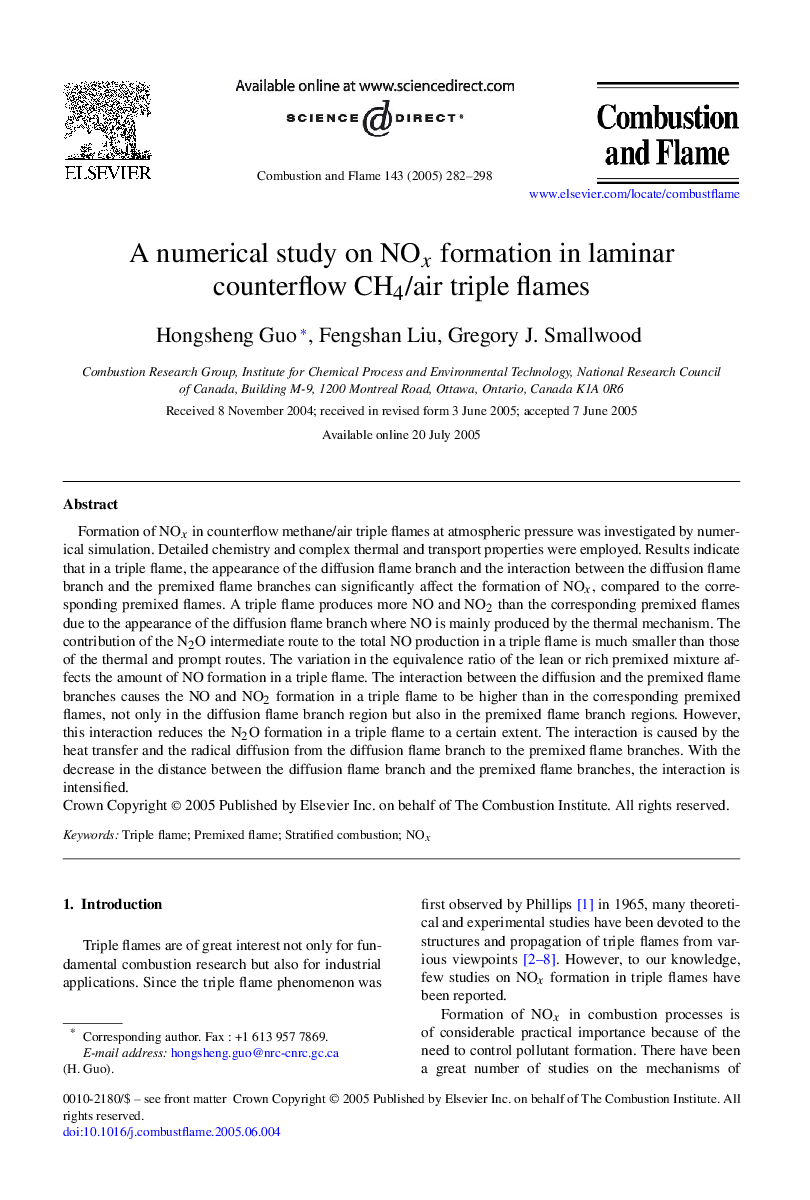| Article ID | Journal | Published Year | Pages | File Type |
|---|---|---|---|---|
| 10264518 | Combustion and Flame | 2005 | 17 Pages |
Abstract
Formation of NOx in counterflow methane/air triple flames at atmospheric pressure was investigated by numerical simulation. Detailed chemistry and complex thermal and transport properties were employed. Results indicate that in a triple flame, the appearance of the diffusion flame branch and the interaction between the diffusion flame branch and the premixed flame branches can significantly affect the formation of NOx, compared to the corresponding premixed flames. A triple flame produces more NO and NO2 than the corresponding premixed flames due to the appearance of the diffusion flame branch where NO is mainly produced by the thermal mechanism. The contribution of the N2O intermediate route to the total NO production in a triple flame is much smaller than those of the thermal and prompt routes. The variation in the equivalence ratio of the lean or rich premixed mixture affects the amount of NO formation in a triple flame. The interaction between the diffusion and the premixed flame branches causes the NO and NO2 formation in a triple flame to be higher than in the corresponding premixed flames, not only in the diffusion flame branch region but also in the premixed flame branch regions. However, this interaction reduces the N2O formation in a triple flame to a certain extent. The interaction is caused by the heat transfer and the radical diffusion from the diffusion flame branch to the premixed flame branches. With the decrease in the distance between the diffusion flame branch and the premixed flame branches, the interaction is intensified.
Related Topics
Physical Sciences and Engineering
Chemical Engineering
Chemical Engineering (General)
Authors
Hongsheng Guo, Fengshan Liu, Gregory J. Smallwood,
